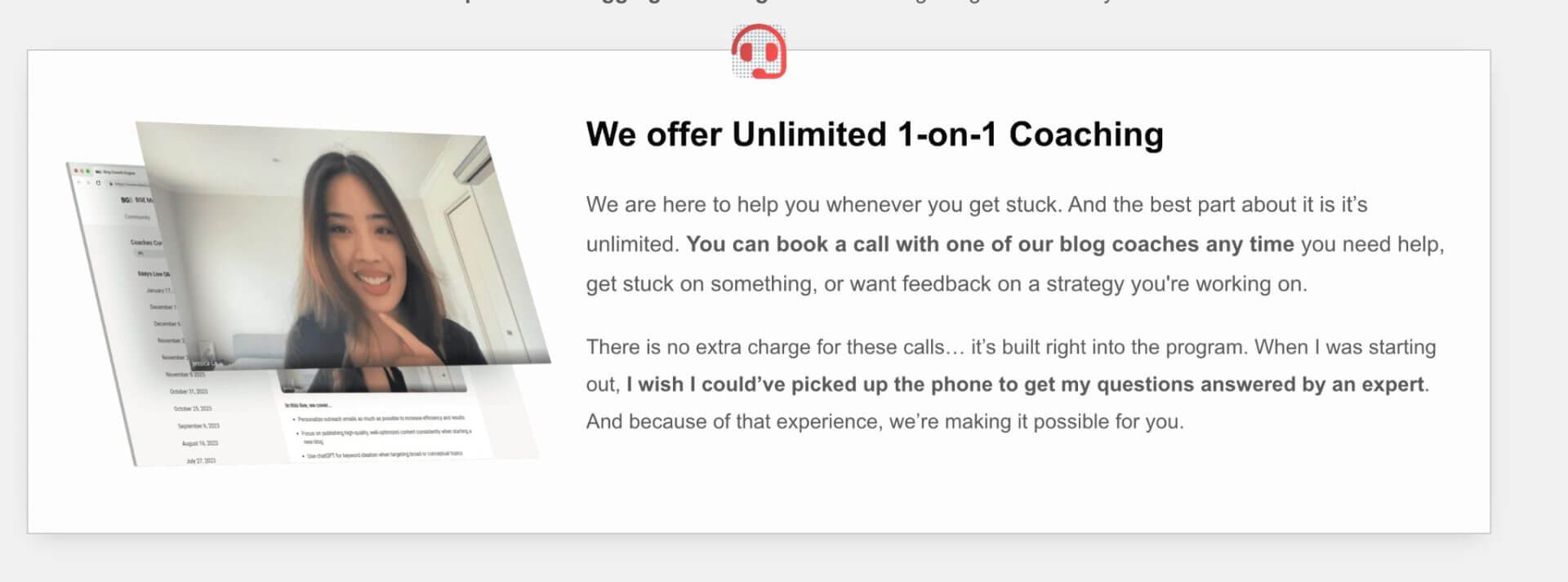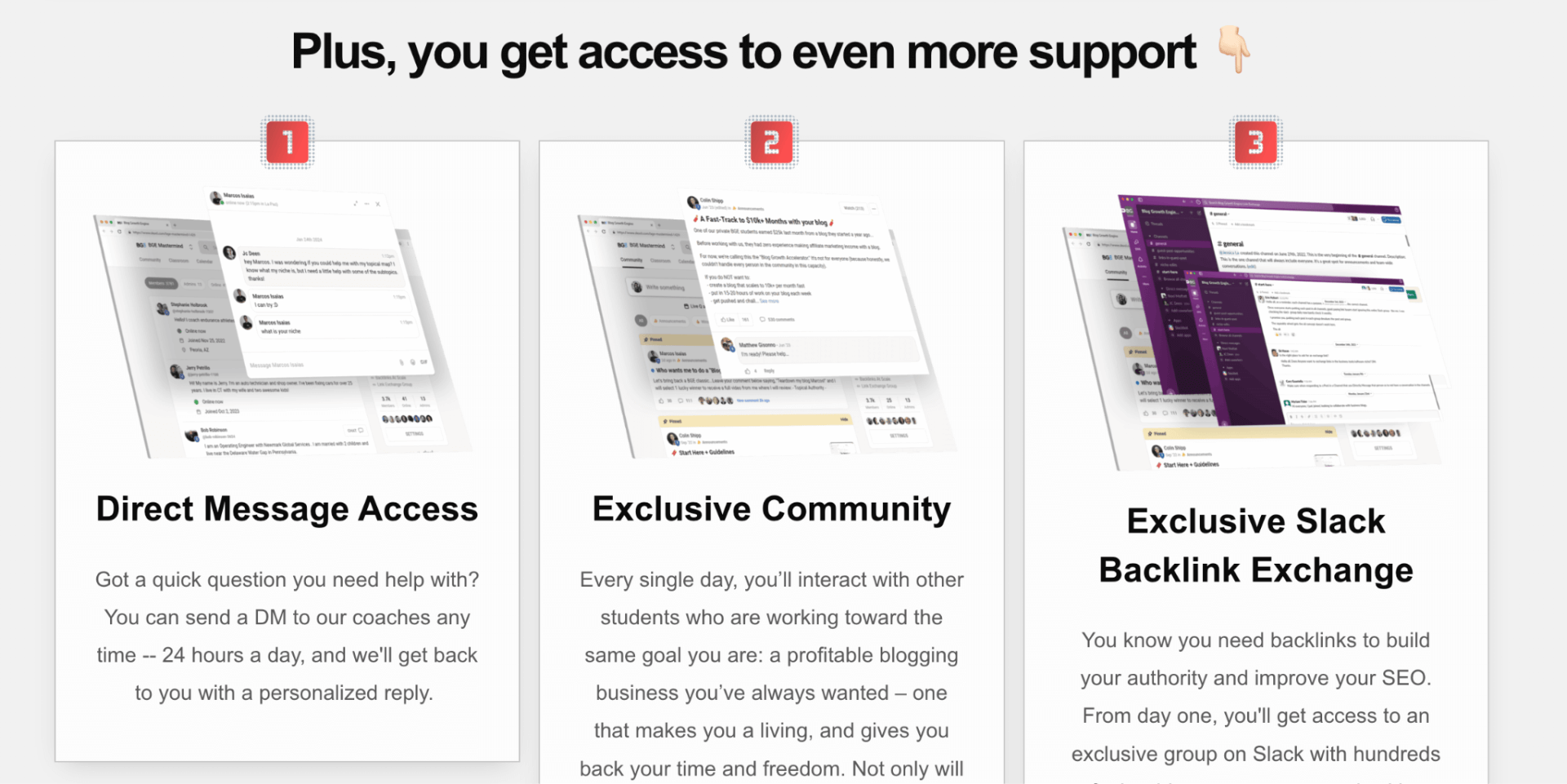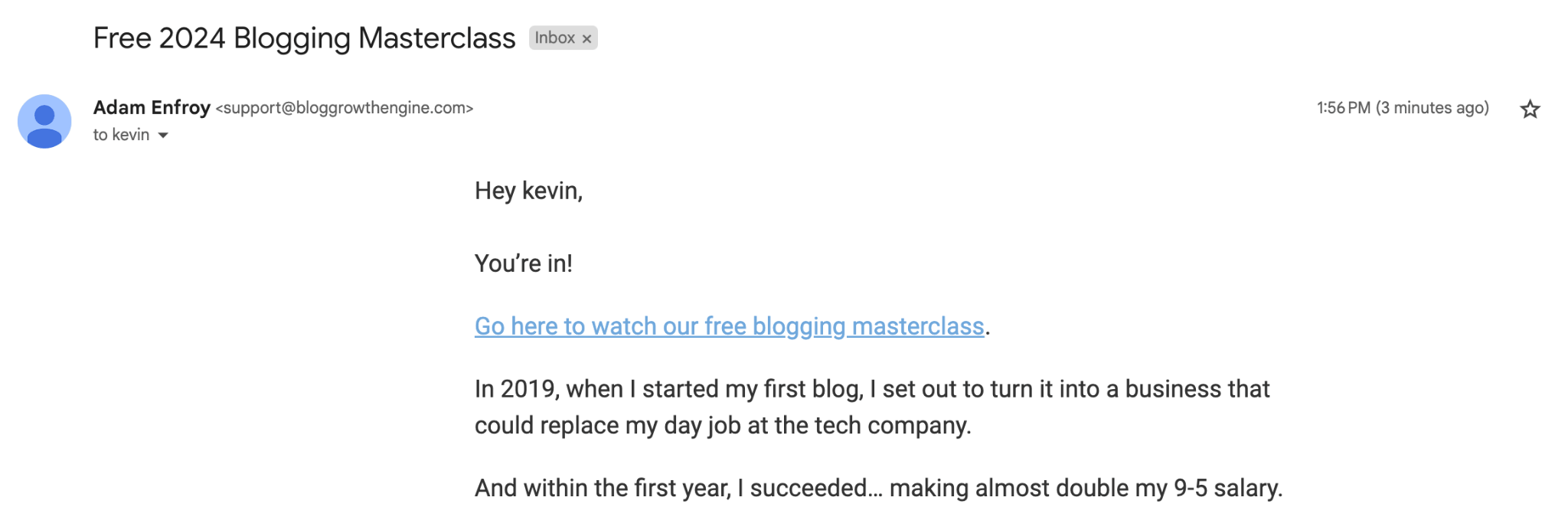How to Sell Courses on YouTube (From a 7-Figure YouTuber)

From viewers to paid students in a click: your YouTube channel can become a lucrative course-selling machine.
I know because I’ve done it. The Adam Enfroy channel has been generating over $100k a month (for two straight years) by selling courses on YouTube.
In this article, I share exactly how I did it, leaving no stone unturned. By the end, you will:
- Discover how I convert YouTube viewers from interested strangers to paid customers. This is crucial if you want higher conversions when selling your own courses.
- Dive into the specific web pages each potential student lands on, helping you create an optimized sales funnel that does the selling for you.
- Understand the logic behind every decision I make so you can connect more effectively with your audience.
If you want to learn from a YouTuber who went from zero to seven figures by mastering the art of selling courses, keep reading.
How I Sell Courses on YouTube
A sales funnel guides people from one selling stage to another. The aim is to get them to the final stage of the funnel over a period of time.
This is how my YouTube sales funnel works.
First, there’s a link to my free masterclass in each video’s description,

I always place this link in the first line. In terms of priority, this is what I want people to click. Therefore, it makes sense to place it where people will notice it.
When someone clicks on that link, they go to my masterclass landing page.

The landing page contains three pieces of information about the 80-minute session:
- An enticing headline that makes people a promise
- A video where I talk about what I cover in the masterclass (i.e., the value people will get if they choose to spend their time with me).
- An opt-in form where people must enter their name and email to get access to my blogging masterclass.
Notice these 3 elements are above the fold. People can immediately see what the page is about without having to scroll down.
This follows the same principles as the masterclass link within the YouTube description.
Key Lesson: show the most important pieces of information first.
When someone scrolls down the page, they also get some additional information.

For those who don’t watch the video (or just want a quick summary), there are three quick bullet points recapping what’s covered in the masterclass. There’s also a call to action button at the bottom of the page that redirects people to the opt-in form.
What happens when someone enters their name and email?
They land on the free blogging masterclass page.

The key here is to deliver on my promise. When I tell someone they’re getting 80 minutes of value, I make sure they get that.
No matter what you promise, you should always deliver in your online course business.
The blogging masterclass is very detailed and covers lots of stuff about blogging. Anyone can take the information from the masterclass and start building their own blog.
However, some people want the extra help. They prefer to save weeks, months, and even years of trial and error. How?
By following the proven frameworks I offer in my Blog Growth Engine course.
Underneath the blogging masterclass video, there’s a call to action button.

This button gives people the chance to join the course. When they click on it, they get to a page with all the details.

It covers all the questions people might have about Blog Growth Engine. The aim is to answer the question, “Is this right for me?”
I also break down what’s included in the course and the value the person will get from it.

I aim to cover all the bases and attract the right people to the course.
Some people join because of the course content (that’s regularly updated). Others join because of the support they get from multiple experienced coaches.

Other students join for direct message access, online community, or Slack backlink exchange.

Key Lesson: Different people buy for different reasons. Don’t be afraid to show them all the valuable aspects they get from working with you.
On the online course sales page above, I have multiple buttons that take people to the checkout page. Here, they can purchase the course and get access to all of the content, coaching, community, etc.
Here are a few further points to notice.
The “Selling Process Doesn’t End When People Buy
When people purchase any of my courses, the real work begins. I want to ensure people are happy with their purchase (over and over again) while getting the best I can offer.
Key Lesson: I want people to feel they got what I promised and that I keep over delivering. How? I keep on selling people on the fact they made the right purchase decision.
Whether it’s through:
- Our weekly calls
- The Community
- The Leaderboard
- Updating the course content
…I always focus on how to provide more value.
Combining Email Marketing with Your YouTube Sales Funnel
When people opt-in to get my masterclass, they also get an email with the masterclass link.

Why do I do this?
Life often gets in the way. Not everyone can immediately sit down and watch an 80-minute masterclass after giving me their name and email.
Using the power of email marketing, people will have the link in their inbox when they’re ready.
I also use email marketing to provide further value and sell people on the course’s value.

Since I have their contact details, I also let them know when I release more valuable content on my YouTube channel.
Here’s an example:

All of this helps me stay in touch and ensure my course is top of mind when it’s the right time for people to buy.
The 5 Awareness Stages When Selling YouTube Courses
Let’s now speak about you.
I’m going to assume you’ve already built your course and published it online.
In other words, people can go to a specific URL, enter their credit card details and find themselves within your membership area.
If that’s you, I urge you to keep on reading. If not, I believe the above link will be more helpful to show you how to build your course.
Here’s an important question: “How do you create content that (almost magically) sells your courses on YouTube?
Let’s consider the 5 stages of awareness. Made popular by Eugene Schwartz in his book Breakthrough Advertising, these provide a very helpful framework to guide people down your sales funnel.
Unaware
People in this stage will land on your YouTube channel and be unaware they have a problem.
For example, consider someone who’s working a 9-5. They understand times are tough and income is tight.
However, they don’t really believe they can make money online.
Creating videos like:
- “my online side hustle” or
- “ever thought of making money online?”
,..can be of interest to people at this stage.
Problem-Aware
Someone might have watched a couple of videos and got their interest peaked. They might have realized that making money online is possible and blogging is one alternative.
And this is where their real questions begin.
The more they research the topic, the more they realize how little they know. As this happens, they start to become more problem-aware.
They start having questions like:
- “How do I start a blog?”
- “Can a blog really help me?”
- “Isn’t having a blog too advanced for me?”
These questions provide an excellent opportunity to create YouTube content to address them.
The content is more advanced than that addressed to the unaware audience. At the same time, it’s still elementary since we’re dealing with beginners on the topic.
Solution-Aware
Let’s keep going with the same example.
People have now started paying attention to your videos. They’ve watched several of them and look forward to your next ones.
The reason? They know that starting a blog could be the solution they need.
However, they’re unsure of the steps to follow. They also don’t know which tools can turn their dream into reality.
After all, there are so many:
- platforms hosting tools
- automation tools
- plugins and
- other technology
… to consider. It’s hard to keep up with all of it.
However, here’s the kicker.
At this stage, the person realizes that someone, somewhere, has figured it out. They’re not yet sure if that’s you or your competitors – they just know there’s an answer out there.
As you create more valuable content, you start showing your expertise. You also start diving into specific solutions to help solve their problems.
And guess what? These solutions involve your products.
Product-Aware
Let’s quickly recap.
In this blogging example, people understand they want to make more money.
They understand a blog can help them achieve their goal, but there’s a lot to figure out. At this stage, they’ve also realized you’re an expert who knows what you’re talking about.
They’re now looking for the best product before making a buy decision. This is where transaction keywords come into play.
On YouTube (and even Google), people search for specific keywords. For example, “best blogging courses for beginners”.
This is where your content should provide the answer as to why your solution is the best in the market.
This product-aware stage is where you demonstrate the value of your solution and what students will get from working with you.
To do this, you can create content like:
- Case studies (showing others who were in the person’s position and have now found success)
- Testimonials from satisfied customers
- Comparison articles showing how your products are better than competitors’
- How-to guides on using your product to achieve specific goals or tasks
- Reviews from third-party sources
This type of content creates a larger distance between your product and competitors’. The aim is to leave no doubt in a potential student’s mind your solution is the one to go for.
Most Aware
At this final stage, people know, like, and trust you. They’ve done their research and are almost ready to buy a product (i.e. solution) to solve their problem.
It is crucial to create content that shows people why they should “buy now” and the value they’ll get from doing so.
You can also get into specific concerns they might have (also known as overcoming objections) and more advanced content on your topic. At this stage, it’s about finding the “key” that unlocks these prospects and gets them to buy.
Above, I mentioned the different angles Blog Growth Engine helps with. I spoke about the coaching, the community, the Slack channel, etc.
These could all be “keys” to showing people that my program is the best out there for helping them build their blogs.
Bringing It All Together
Now that you understand the type of content you can create for the different stages of awareness, let’s bring it all together.
To start, figure out what stage your audience is at.
Are they beginners who aren’t even aware they have a problem? The type of content you’ll create differs from that addressed to people looking for products to compare (i.e., those in the final stages of awareness).
Ideally, you’ll want content that addresses people at all stages.
It’s never black or white – no one is strictly within one awareness stage.
Next, consider how your YouTube channel, online course website, emails, and marketing interact.
For example, when people click the link in your YouTube video description, they will be curious about what you can offer them (i.e., how you can help them).
The content on your own website should reflect this.
In my case, my free blogging masterclass helps:
- provide valuable content
- build trust with people
- help them decide if they want to learn more about blogging
- potentially purchase my course.
After my website, they also get email content to help solidify the above points. All the different channels work together to help provide value through selling my courses.
The Power of YouTube for Course Sales
YouTube offers a lot of benefits for course promotions.
One of the biggest benefits is the ability to build a large engaged audience. When people consume video after video, they build familiarity with your content and you as the creator.
Over time, the concept of reciprocity kicks in.
When you provide valuable content (for free) on YouTube, people will naturally want to know how else you can help them.
In most cases, people will automatically go to a YouTube video’s description and see if there’s anything else you offer.
In addition, with each video you publish on YouTube, the net effect isn’t just one more video.
Instead, compounded together, each video is an asset that “never dies”.
Compared to content on social media (which disappears after a few hours), your videos remain forever discoverable on YouTube.
These video assets help build trust and establish yourself as an authority.
The result? It’s easier to sell online courses to your target audience.
Videos allow people to see:
- The mediums you use to teach (whether you use screen shares, a whiteboard, etc)
- The pace of your content (whether you prefer to go slow or fast)
- The level of quality of your content
- Your teaching style (are you funny, serious, energetic or calm?)
When someone buys your course after consuming your YouTube content, they won’t get any surprises when they enter the membership area.
This results in fewer refunds and more happy customers.
Avoid Common Pitfalls When Selling YouTube Courses
Here are the main pitfalls to avoid when selling your courses on YouTube.
Overpromoting Before Providing Value
This should go without saying – providing value must come first.
People will only buy your courses when they know you can deliver (more) value than the price they’ll pay.
The good news is that there are many ways to show this. The easiest one on YouTube is to actually provide value (duh) in your free YouTube videos.
Understanding your market and its pain points is the first step. Then, it’s all about creating content to provide solutions.
Also, your videos shouldn’t be a pitch fest.
Having a couple of soft sells asking people to check out the link in your description is great.
Having a full blown advertisement every few seconds isn’t.
Neglecting Audience Engagement
YouTube is a social platform. Interacting with your audience (by replying to their comments) is crucial.
When people realize their input is valuable, they are inclined to offer more. This positions you as an authority on your topic who listens to what your people are saying.
The comments might also give you an online course idea list you hadn’t thought about.
If you want to take things to the next level, you could even have YouTube live streams. Here, people can tune in and ask questions in real-time. This is one of the best ways to become the top expert in your niche.
Inconsistent Content Uploads
Many YouTubers are super enthusiastic when starting their YouTube channel. They upload videos regularly, expecting fast results.
When results don’t happen as quickly as they had hoped for, their upload schedule takes a hit.
They start uploading whenever they feel like it. Sometimes, they just stop uploading new content. This is one of the worst things you can do on YouTube.
Getting the ball rolling and building momentum is challenging. However, you can only build this momentum by uploading content. There are no other ways around this.
Key Lesson: Consistency keeps your channel active. It also retains your audience’s interest.
Underestimate the Power of Thumbnails and Titles
Your thumbnails and titles are the two factors that “sell” your videos to people on YouTube.
Whether they search for a specific keyword or YouTube recommends your videos, thumbnails and titles are factors within your control.
Want to be in control and optimize for success?
There are YouTube tools that help split-test these two aspects. This exercise lets you take a scientific approach to creating the best thumbnails and titles.
Never Optimizing Your Sales Funnel
Think of your sales funnel as an iterative process. While some parts might work well (from day one), others will require tweaking.
Changing one small part of your funnel can significantly impact your bottom line.
For example, changing your landing page to include video content (in addition to static text) might increase the number of people who sign up for your email newsletter by 10%.
One small change = a big improvement = more money from online course sales.
As with your YouTube video title and thumbnail, it’s all about testing to see what works best.
Ignore YouTube Analytics
YouTube’s data can tell you a lot about your videos. It shows which videos have the most views, likes, and comments.
You can also get information about your target audience and their preferences.
Your analytics will help you determine what works and what needs improving.
You can also gain insight into metrics like:
- watch time
- retention rate
These two metrics show how engaged your audience is with your videos.
If you want to improve your overall YouTube content creation process (and your sales funnel as a result), look at your analytics – and do it often.
Conclusion
Becoming a seven-figure seller on YouTube is a wild ride. There’s a lot to learn, implement, and iterate.
But it’s totally worth it.
If you’re ready to get started, just remember it’s about the value you bring to your audience.
And value simply means understanding what makes your people tick and providing the content they need.
Once you can create valuable content, ensure you have the course structure to help support those who want more help.
And that’s how you start selling online courses on YouTube.





